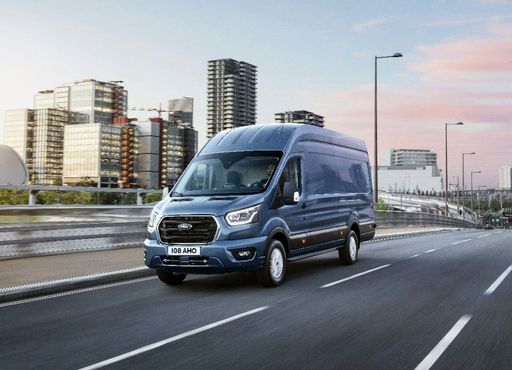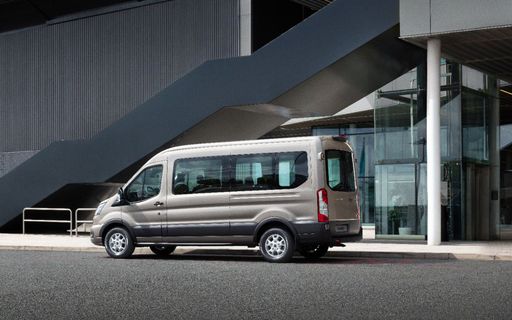Citroen Jumpy Transporter vs Ford Transit Connect – Differences & prices compared
Both models have their strengths – but which one suits you more?
Compare performance, efficiency, price and space directly: Citroen Jumpy Transporter or Ford Transit Connect?
Costs and Efficiency:
When it comes to price and running costs, the biggest differences usually appear. This is often where you see which car fits your budget better in the long run.
Ford Transit Connect has a noticeable advantage in terms of price – it starts at 26700 £, while the Citroen Jumpy Transporter costs 32100 £. That’s a price difference of around 5406 £.
Fuel consumption also shows a difference: Ford Transit Connect manages with 0.50 L and is therefore decisively more efficient than the Citroen Jumpy Transporter with 6.20 L. The difference is about 5.70 L per 100 km.
As for range, the Citroen Jumpy Transporter performs convincingly better – achieving up to 328 km, about 210 km more than the Ford Transit Connect.
Engine and Performance:
Power, torque and acceleration say a lot about how a car feels on the road. This is where you see which model delivers more driving dynamics.
When it comes to engine power, the Citroen Jumpy Transporter has a a bit edge – offering 180 HP compared to 150 HP. That’s roughly 30 HP more horsepower.
In acceleration from 0 to 100 km/h, the Ford Transit Connect is slight quicker – completing the sprint in 11.40 s, while the Citroen Jumpy Transporter takes 12.10 s. That’s about 0.70 s faster.
In terms of top speed, the Ford Transit Connect performs a bit better – reaching 186 km/h, while the Citroen Jumpy Transporter tops out at 160 km/h. The difference is around 26 km/h.
There’s also a difference in torque: Citroen Jumpy Transporter pulls slightly stronger with 400 Nm compared to 350 Nm. That’s about 50 Nm difference.
Space and Everyday Use:
Whether family car or daily driver – which one offers more room, flexibility and comfort?
Seats: Citroen Jumpy Transporter offers to a small extent more seating capacity – 6 vs 5.
In curb weight, Ford Transit Connect is to a small extent lighter – 1477 kg compared to 1722 kg. The difference is around 245 kg.
In maximum load capacity, the Citroen Jumpy Transporter performs noticeable better – up to 6100 L, which is about 2400 L more than the Ford Transit Connect.
When it comes to payload, Citroen Jumpy Transporter distinct takes the win – 1226 kg compared to 792 kg. That’s a difference of about 434 kg.
Who wins the race?
The Ford Transit Connect proves to be is largely superior and therefore becomes our DriveDuel Champion!
Ford Transit Connect is the better all-rounder in this comparison.
 @ Ford Motor Company / Ford Media Center
@ Ford Motor Company / Ford Media Center
Ford Transit Connect
Citroen Jumpy Transporter
The Citroen Jumpy Transporter exemplifies versatility and practicality, making it an ideal choice for both urban and long-distance driving. With its spacious interior and advanced features, it caters to a range of commercial needs while ensuring comfort for the driver. The Jumpy also boasts a contemporary design, reflecting Citroen's commitment to style and functionality.
detailsFord Transit Connect
The Ford Transit Connect is a versatile compact van that seamlessly combines functionality with a comfortable driving experience. Its spacious interior is designed to accommodate both passengers and cargo, making it an ideal choice for small businesses and active families alike. With its efficient engine and agile handling, the Transit Connect offers a reliable and economical option for urban and suburban driving.
details @ Ford Motor Company / Ford Media Center
@ Ford Motor Company / Ford Media Center
 @ Ford Motor Company / Ford Media Center
@ Ford Motor Company / Ford Media Center
 @ Ford Motor Company / Ford Media Center
@ Ford Motor Company / Ford Media Center
 @ Ford Motor Company / Ford Media Center
@ Ford Motor Company / Ford Media Center
|
|
|
|
|
Costs and Consumption |
|
|---|---|
|
Price
32100 - 52000 £
|
Price
26700 - 41500 £
|
|
Consumption L/100km
6.2 - 6.5 L
|
Consumption L/100km
0.5 - 5.8 L
|
|
Consumption kWh/100km
23.6 - 24.7 kWh
|
Consumption kWh/100km
-
|
|
Electric Range
222 - 328 km
|
Electric Range
118 km
|
|
Battery Capacity
-
|
Battery Capacity
19.70 kWh
|
|
co2
0 - 199 g/km
|
co2
11 - 153 g/km
|
|
Fuel tank capacity
69 L
|
Fuel tank capacity
32 - 50 L
|
Dimensions and Body |
|
|---|---|
|
Body Type
Cargo Van
|
Body Type
Cargo Van
|
|
Seats
3 - 6
|
Seats
2 - 5
|
|
Doors
4
|
Doors
4
|
|
Curb weight
1722 - 2188 kg
|
Curb weight
1477 - 1866 kg
|
|
Trunk capacity
-
|
Trunk capacity
-
|
|
Length
4959 - 5309 mm
|
Length
4500 - 4868 mm
|
|
Width
1920 mm
|
Width
1855 mm
|
|
Height
1895 - 1935 mm
|
Height
1856 - 1860 mm
|
|
Max trunk capacity
3200 - 6100 L
|
Max trunk capacity
2500 - 3700 L
|
|
Payload
881 - 1226 kg
|
Payload
602 - 792 kg
|
Engine and Performance |
|
|---|---|
|
Engine Type
Electric, Diesel
|
Engine Type
Diesel, Plugin Hybrid
|
|
Transmission
Automatic, Manuel
|
Transmission
Manuel, Automatic
|
|
Transmission Detail
Reduction Gearbox, Manual Gearbox, Automatic Gearbox
|
Transmission Detail
Manual Gearbox, Dual-Clutch Automatic
|
|
Drive Type
Front-Wheel Drive
|
Drive Type
Front-Wheel Drive, All-Wheel Drive
|
|
Power HP
120 - 180 HP
|
Power HP
102 - 150 HP
|
|
Acceleration 0-100km/h
12.1 - 13.3 s
|
Acceleration 0-100km/h
11.4 - 13.5 s
|
|
Max Speed
130 - 160 km/h
|
Max Speed
175 - 186 km/h
|
|
Torque
260 - 400 Nm
|
Torque
280 - 350 Nm
|
|
Number of Cylinders
4
|
Number of Cylinders
4
|
|
Power kW
88 - 132 kW
|
Power kW
75 - 110 kW
|
|
Engine capacity
1499 - 2184 cm3
|
Engine capacity
1498 - 1968 cm3
|
General |
|
|---|---|
|
Model Year
2024 - 2025
|
Model Year
2024 - 2025
|
|
CO2 Efficiency Class
A, F, G
|
CO2 Efficiency Class
E, B
|
|
Brand
Citroen
|
Brand
Ford
|
What drive types are available for the Citroen Jumpy Transporter?
Available configurations include Front-Wheel Drive.
The prices and data displayed are estimates based on German list prices and may vary by country. This information is not legally binding.
